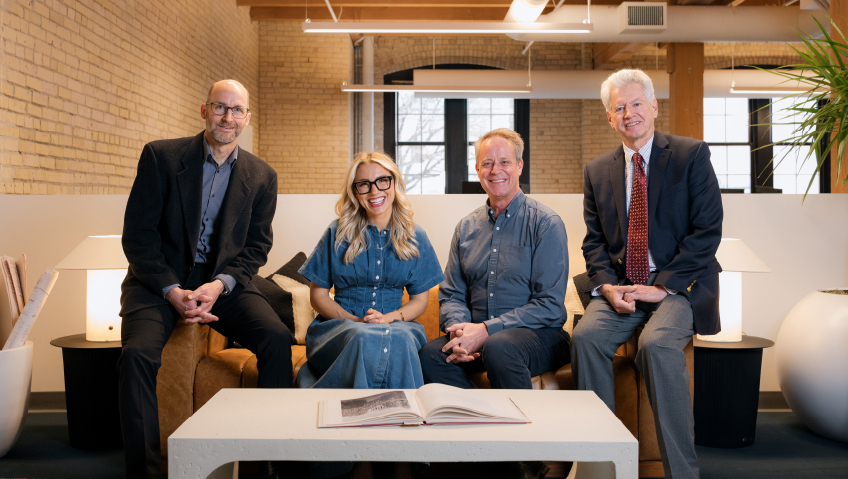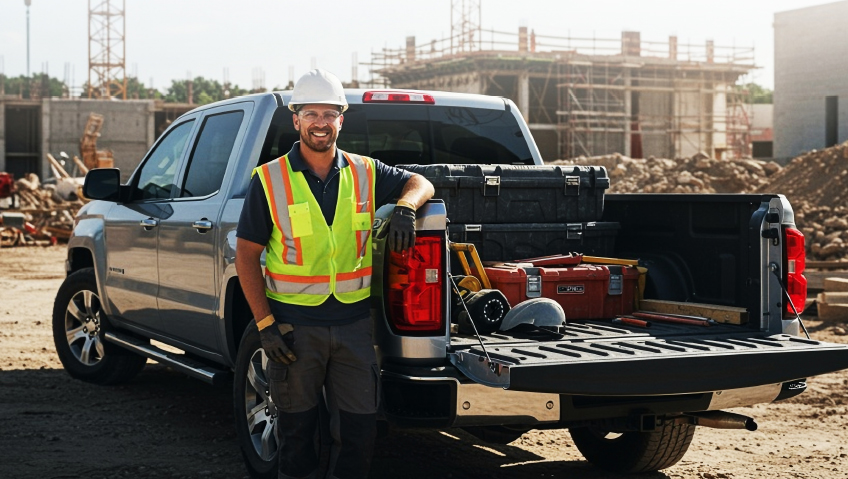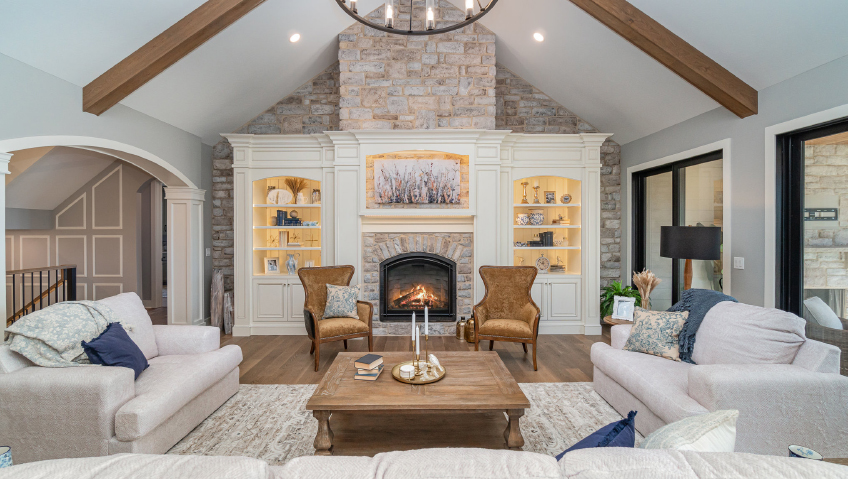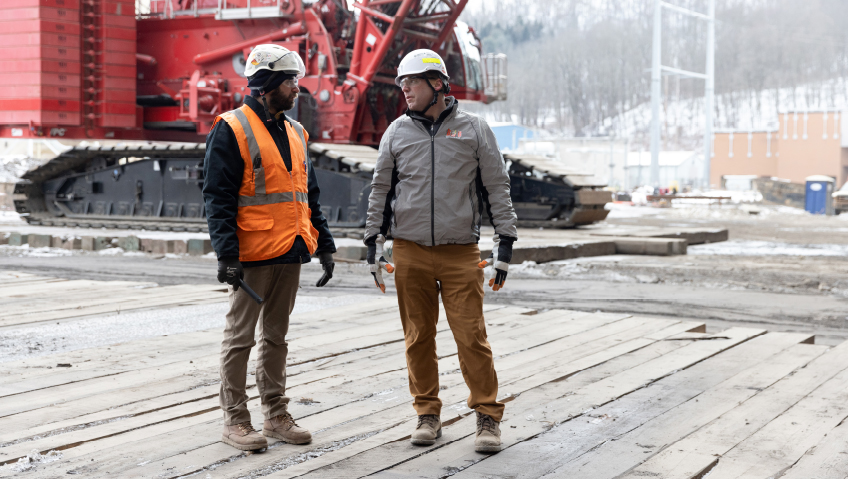Throughout his celebrated architectural career, Dean Dovolis has devoted his time and expertise to the building profession, helping others and sharing his passion along the way. As Principal and Chief Executive Officer at Minneapolis-headquartered DJR | Architecture & Design, Dovolis has seen the industry adapt over the years, especially as demand for affordable housing has skyrocketed.
One of the best ways to address housing shortfalls, he believes, is with modular construction, and this saw DJR form a recent strategic partnership with George Modular Solutions, LLC.
Based in North Minneapolis, Minnesota, George Modular Solutions is an up-and-coming company using cutting-edge design, materials, and strategies to create permanent structures faster, more efficiently, and more cost-effectively than ever before. Industry experts lead George Modular’s team with decades of combined construction experience. This includes company Founder Devean George, Chief Executive Officer Lewis Lockwood, Chief Financial Officer Michael Sheatzley, Vice President of Architecture Linda Morrissey, and Chief Operations Officer Will Gorrilla.
“I knew both Lew and Will from previous engagements in the modular world,” says Dovolis. After several phone calls, a team was created. “Devean first had the dream of creating affordable housing in inner-city locations using modular construction as a way of getting there—that’s really what he called the beginning of the strategic alliance about three years ago.” This soon led to making Devean’s vision a reality, including talks with Minneapolis city officials, raising money, and going through the processes necessary to create a modular manufacturing facility.
The George Modular plant is being fitted out, and the dream is poised to come to fruition in the next few months. Once heavy equipment is set up, plans are to get production underway by July or August.
The future is modular
Prior to the creation of George Modular Solutions about two years ago, the team members had gained considerable construction industry experience in their prior roles. As an independent consultant, Lockwood worked with architects and developers entering the modular arena, helping shape plans and processes. Gorrilla worked with a developer who owned about 4,000,000 square feet commercially, with a general contractor in the modular space, and on multifamily projects as a project manager and director of operations. “That allows me to see both sides of things,” he says.
The strategic partnership between George Modular and DJR is an ideal fit, and taps into Dovolis’s decades of experience. Earning a bachelor’s degree in Architecture and Environmental Design from the University of Minnesota-Twin Cities and a master’s in Architecture and Urban Design from Harvard, he set out on his own, founding DJR in 1985. Even long before modular construction was known, Dovolis knew there had to be better and less costly ways to build much-needed affordable housing in urban areas.
Active in many areas, including civic/cultural, commercial/hospitality, and historic preservation, DJR has led the way with modular projects such as The Dylan and Mod42. One of its most recent works is the award-winning Alvera. A multi-family project in downtown Saint Paul, Minnesota, it the first seven-story Type 3A modular building in the region.
With decades of modular experience, Dovolis is advising on the George Modular facility. He is working with Minnesota-based Mobilize Design & Architecture (MDA) and its Design Principal and Founder, Jamil Ford, on the layout of the plant. “We are working together to create this new adventure in the modular industry,” says Dovolis.
Although he has been instrumental in many modular projects over the years—and seen different construction methods and materials used—Dovolis says the unique thing about George Modular’s projects is they use steel, not wood. The advantages of steel are many, including precision, longevity, structural strength, and the ability to build taller structures. At present, state regulations allow for a maximum 85-foot height for wooden structures because of fire codes. Since steel doesn’t combust, it allows for greater building heights.
George Modular is working on what will become the first steel modular project in Minnesota which, says Dovolis, “will open up a whole new frontier in the modular industry.” Slated to be three stories, the 36 box/12-unit project will be a test case for the company. A smaller self-development project, the work will become NOAH, Naturally Occurring Affordable Housing. “What that means is, if you build a building efficiently and cost-effectively enough, you can self-perform as affordable housing without the need for government assistance or underwriting or things like that,” Dovolis explains. “The idea is that you create affordable housing without the need for having subsidies.” Other projects in the works include Upper Harbor Development and Village Creek Apartments.
Housing, job creation, and more
Unlike conventional construction, which either requires workers to be on site regardless of the weather or sees the work slow down, modular construction is performed in controlled conditions and is repeatable. As it stands, most modular construction facilities are in rural areas, far away from the cities in which buildings will be located, but George Modular has flipped this model around, and is one of the very few modular plants in an urban setting.
“Others have the advantage of having space, but we have the advantage of having people,” says Gorrilla. “Having people is really going to give us a better long-term advantage; we have the people and we’re going to be that much closer to projects. The site is only a mile and a half from the factory, so there are a lot of advantages to be gained by not having to haul miles away.”
For workers, the urban location of the modular manufacturing facility is ideal. Unlike other plants located many miles distant, George Modular is in North Minneapolis, which is historically an underserved, under-invested neighborhood. Instead of workers having to buy a car to get to work, they can take the bus, bike, or even walk to the plant.
“One of Devean’s goals is to build great housing that the people who work in the factory can live in,” adds Gorrilla. “The idea is to create opportunities for people who would normally not get into the building trades. If they put a union hall half an hour outside the city—and you have to be there at 7 o’clock Saturday morning for training—it becomes quite difficult for people coming from areas where they can’t afford a car. So, Devean’s goal is to create opportunities to get those underserved people into the trades.”
Dovolis agrees. “George Modular is one of the few in the nation that’s made a commitment to an urban environment to create modular manufacturing in the city, in underserved neighborhoods. This is a big deal for what it represents,” he shares.
Lockwood says one of the biggest challenges of getting a plant up and operational is securing workers; in rural areas, securing staff can take a year or more because there are fewer people. For George Modular, being in a large city like Minneapolis will see employees hired much sooner. At present, the company is negotiating with vocational schools and unions: if employees can be trained in the plant to be well-rounded in construction, they make better candidates for different unions, and will receive livable wages. “We don’t want to be a training facility per se, but we understand people have aspirations,” says Lockwood.
Better building and environmental advantages
For George Modular staff, modular construction has a host of benefits. About 80 to 90 percent of the work takes place in a safe, well-lit facility, not outdoors in blistering heat or freezing cold. Since manufacturing is performed in controlled conditions, caulking, sealants, and waterproofing are applied according to manufacturer recommendations. And with modular units built in an urban factory and transported short distances, there is less chance of damage compared to trucking them a hundred miles or more.
Since completed units are transported shorter distances, embodied carbon emissions are greatly reduced. And with units made in a factory instead of on a job site, there is very little waste. The bulk of material generated, such as cardboard and plastic packaging, can be recycled, while metal can be sold as scrap and re-purposed. “We can recycle about 30 to 40 percent of what comes in, whereas on a construction site, almost none of it is recycled,” says Gorrilla. And to further protect the environment, optimize efficiencies, and be cost-competitive, George Modular only accepts full trucks—no partial loads. “It’s a drastic difference between the number of miles on a modular build versus a traditional build.”
“Really, the quality is exceptional,” says Lockwood. While certain elements, like the foundation and exterior façades, must be done on-site, structural members come already installed, along with drywall, countertops, cabinets, sinks, toilets, and more. “And if they want us to hang pictures on the wall, we will hang pictures on the wall,” he adds. “Everything is in when it goes out to site.” Once modular units arrive and are set in place, they are essentially plug-and-play systems. Crews come in and tie all the mechanical, electrical, and plumbing together.
George Modular hopes to see the Upper Harbor Terminal being built next year. “That project will really put us on the map,” says Lockwood of the large-scale development on the banks of the Mississippi. “It is very substantial.” He also envisions the company adding another shift to its urban facility, ultimately employing about 300 workers. “What we’ve done here is repeatable,” he says. “There is a radical need for housing in most urban areas, and there just isn’t a solution in Canada and the U.S. So the intent would be to replicate what we’ve done here and move it down the road to the next city that’s 500 miles away, which would be my hometown, Detroit.”
For Dovolis, 2026 will mark the 40th anniversary of DJR. Dovolis is the only original member still active, as the others have retired. He has two existing partners, Sheldon Berg and Scott England, and just took on new partner Madi Goodrich, who started a burgeoning interior design component to the firm which is going national.
“We’ve done a good job of surviving,” he says. “It’s been scary a few times, but we are still going. Anything that survives 40 years is a celebration in business. We’ve worked through recessions, depressions, inflationary periods, COVID, and everything else, and the firm is still alive and strong. That’s a real blessing.”






